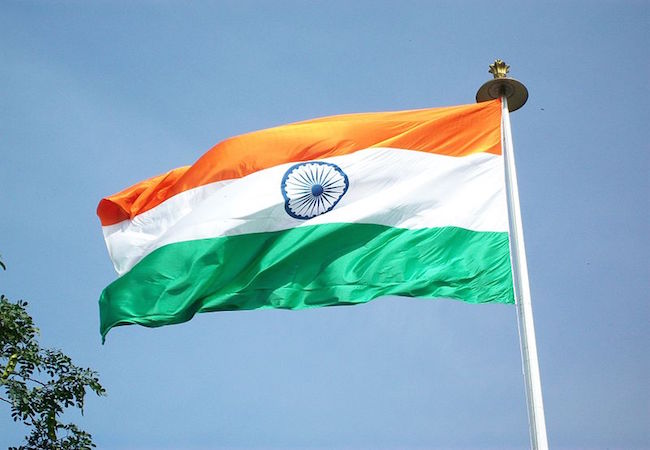Pakistan’s TNW’s saga: facts and fiction

By Asma Khalid
Existence of Action-Reaction Spiral between South Asian nuclear rivals has increased the fragility of the regional strategic stability. India’s military modernization drive comprised of military stockpiling and war-prone military strategies such as Cold Start Doctrine (CSD) is considered as alarming for deterrence stability in the region. The worrisome reality about India’s military modernization based on the huge militarization thrust has the potential to disturb the balance of power and the deterrence stability in region.
In 2004, India introduced a new military doctrine known as Cold Start as a part of its grand strategy to ensure training, procurement, services and national policies to achieve edge in future military operations under the nuclear overhang against Pakistan. It is based on the pre-emptive strike with reduced mobilization period of integrated battle groups for limited war. The aim of the doctrine is to launch a retaliatory punitive conventional strike to inflict maximum damage by using conventional arms at the time of crisis and use it as a bargaining chip. In Cold start Doctrine not only ensured the forwarded dumping of ammunition and placing of troops in forwarded cantonment but also brought change in their war strategy by immediately employing of their forwarded deployed troops on offensive role as part of their “Pro-active strategy” to achieve limited aim offensive.
Indian aim of Cold Start Doctrine (CSD) or Pro-active strategy is to engage Pakistan in a limited war; a war which bring financial and economic restraints for Pakistan. Therefore, Indian shift from traditional defensive posture to more offensive posture against Pakistan through Cold Start Doctrine, forces Pakistan to formulate strategic solution to maintain Balance of Power. So the question arises that what are the options for Pakistan to shape its defence policy in response to India’s Pro-active strategy against Pakistan?
In response to real threat of Cold Start of aggressive insight, Pakistan adopted the counter measure strategy and developed the short range, low-yield, battle field nuclear weapons. NASR (Hatf-IX) is the most significant short range missile that aims to prepare against Indian aggression through punitive retaliation. NASR was introduced in 2011, it is dual-capable missile with a range of 60km and it is characterized as “quick response system”. NASR is dual-capable battlefield weapon it can carry the both nuclear and conventional warhead to defeat external aggression. Additionally, it is significant to note that, NASR is not only the cost effective apparatus against Indian aggression but it has also enhanced Pakistan’s deterrent force value. According to the ISPR, NASR has capability to contribute to “full spectrum deterrence” against perceived evolving threats and it has successfully defeated the Indian aim of exploring the means for conventional conflict. Due to these factors, Pakistan’s strategic planners views NASR as a viable solution to Indian cold start doctrine and Maintain that NASR has put Cold Water on Cold Start because it has reduced the probability of any kind of aggression or limited war against Pakistan and brought down the evolving threat of war on strategic level.
Global strategic reservations exist on Pakistan’s low yield, battlefield, strategic nuclear missile “NSAR”. The global debate on Pakistan’s “NASR missiles” revolves around propaganda of Western and India analysts and strategic thinkers. Debate about the TNWs in South Asian context started in 2011 after the flight testing of NASR by Pakistan. Pakistan also has Abdali (180 km) and Hatf-IA (100 km) missiles that confer tactical capability. Whereas India also possess TNWs including Indian made short range Ballistic missile ‘Prahaar’ (150 km) and tactical surface-to-surface missile ‘Pragati’ (60-170 km) ; Pragati’ is based on the Prahaar missile. India is also working on Pinaka Guided (60 km) that will be a tactical asset. Such weapons provide better reaction time to India than liquid fuelled Prithvi-I. It is imperative to identify that India tested Prahaar after few months of Pakistan’s test of NASR and now India is developing more tactical Nuclear Weapons. However dilemma of global strategic argument regarding TNWs is that debate remains muted about India’s tactical nukes. Moreover, it is significant to note that low-yield short range weapons should be called as “battlefield weapons or strategic weapons” instead of Tactical Nuclear Weapons.
Yet, significance of low-yield ballistic missiles in South Asia cannot be undermine by global propaganda against Pakistan’s NASR because it is defensive weapon aims to uphold strategic and deterrence balance in the region which is expected to be affected in future due to India’s military modernization plans and growing conventional asymmetry. By developing NASR, Pakistan gave a viable solution or calculated mechanism to counter the India’s Cold Start Doctrine without undermining the deterrence stability of region.
Asma Khalid is a Research Associate at Strategic Vision Institute, a think-tank based in Islamabad.




